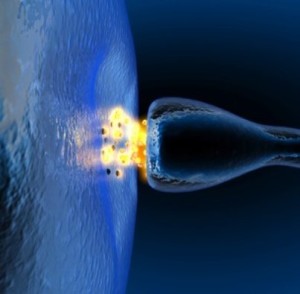 Fibromyalgia is a difficult syndrome to diagnose and to treat. Worse yet for fibro patients, a large portion of the medical community still does not recognize fibromyalgia as a real or serious condition. What treatments do exist are inconsistent in their effectiveness and largely treat very specific symptoms like pain or depression, and there have been next no treatments at all for such debilitating symptoms as the extreme fatigue and brain fog that seriously impact quality of life for so many fibro patients.
Fibromyalgia is a difficult syndrome to diagnose and to treat. Worse yet for fibro patients, a large portion of the medical community still does not recognize fibromyalgia as a real or serious condition. What treatments do exist are inconsistent in their effectiveness and largely treat very specific symptoms like pain or depression, and there have been next no treatments at all for such debilitating symptoms as the extreme fatigue and brain fog that seriously impact quality of life for so many fibro patients.
Fibro's Silent Partner
One of the biggest challenges in treating fibromyalgia is that the symptoms are so diverse and vary so much not only from patient to patient but from week to week and even moment to moment. The symptoms of fibromyalgia very closely match those of autonomic dysfunction, or a malfunctioning of the autonomic nervous system. These symptoms include extreme and often debilitating fatigue, sleep disturbances, headaches, brain fog, cold and heat intolerance, and bladder or bowel problems.
It is now understood that many with fibromyalgia in fact have a type of autonomic dysfunction called Small Fiber Neuropathy (SFN)1. SFN can be diagnosed with a sweat test or skin biopsy2, which is part of our screening process used to diagnose patients with autonomic dysfunction. Up until now, there has been no treatment for the underlying autonomic dysfunction associated with fibromyalgia.
A New Approach to Treating Fibromyalgia
We have developed a treatment called Transvascular Autonomic Modulation (TVAM) that restores autonomic function to patients with fibromyalgia. The procedural goal of TVAM is to stimulate the autonomic nerve fibers surrounding the central veins. This stimulation leads to a reset in the hypothalamus3. The result is improved autonomic ‘tone’. By restoring the body’s ability to internally regulate, the above symptoms can be reduced or eliminated, vastly improving the quality of life for many patients.
Success Rates
The TVAM treatment is successful at relieving symptoms in over 90% of patients. Results are immediate, with many patients experiencing a dramatic reduction in symptoms during and directly following the procedure. Improvements have shown to be been long-lasting in 75% of patients, some continuing to maintain or improve 2-3 years after treatment.
If you have any questions about the TVAM procedure or if you would like to know if you might be a good candidate, please feel free to contact us via our web form or call us at (877) 792-2784.
1http://www.ncbi.nlm.nih.gov/pubmed/23748113
2http://www.bmctoday.net/practicalneurology/pdfs/PN1009_06.pdf
3http://neuroscience.uth.tmc.edu/s4/chapter03.html
Dr. Arata responds personally to Facebook comments between the hours of 3:30-5pm PST on Thursdays and throughout the week as his schedule permits.
Comments
Powered by Facebook Comments

Join Our Network: